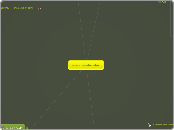macromolecules
proteins
monomer: amino acids
20 different amino acids
amino acid chains
proteins
amino acids chained into a polymer
amino acids are linked by peptide bonds
each amino acid is the same except for the variable (functio) group
the variable group changes the property of the amino acid
some are electrically charged, some are not
some are polar, some are non polar
composed of C, H, O, and N
N = nitrogen
hormones, movement, immune system, enzymes
examples
skin
muscle
ligaments
bone
fingernails, claws
hair
enzymes
example: pepsin
hormones
example: insulin
provocative proteins
fireflys
luciferase
jellyfish gene
pufferfish, scorpions, cobras
nerve toxins
spider webs
fibroin
porcupines quills, rhinocerous's horn
structural keratin
functions
hormones
insulin
movement
muscle
immune system
protect agains germs
enzymes
help chemical reactions
structure
proteins fold and twist into a 3D shape
primary structure: sequence of amino acids
like letters in a word, change them aound and you change the word
example: letters or settler
secondary structure: chains coil or fold
like grouping words into a sentence
two types
alpha helix
pleated sheet
hydrogen bonding
example: silk
tertiary structure: attraction between the alpha helixes and beta sheets
like weaving sentences together into a short story
quaternary structure: one or more chains bonded together
like short stories put together into a book
examples: collagen and hemoglobin
proteins do their job because of their shape
unfolding a protein destroys it's shape
wrong shape = can't do it's job
unfolding proteins = denature
temperature
pH (acidity)
carbohydrates
monomer: monosaccharides
sugars
classified by number of carbons
names for sugars usually end in "ose"
examples: fructose, glucose, sucrose, maltose
simple and complex sugars
monosaccharides: simple 1 monomer sugars, glucose
disaccharides: 2 monomers, sucrose
polysaccharides: large polymers, starch
composed of C, H, and O
carbo-hydr-ate
always in a 1:2:1 ration
C>6 H>12 O>6
function: quick energy, energy storage, structure
examples: sugars, starches, celluslose (cell wall), glycogen
building carbohydrates
dehydration synthesis
2 sugars: disaccharide
building BIG carbohydrates
glucose + glucose + glucose = polysaccharide
starch: energy storage in plants
example: potatoes
glycogen: energy storage in animals
example: in liver and muscles
cellulose: structure in plants
example: cell walls
cell walls in plants
herbivores can igest cellulose
most carnivores cannot digest cellulose
that's why they eat meat to get their energy and nutrients
cellulose = fiber
chitin: structure in anthropods and fungi
example: exoskeleton
starch = plant
glycogen = animal
lipids
monomers: triglycerides
structure
fatty acid
long HC "tail" with COOH group at "head"
glycerol
glycerol + fatty acid = dehydration synthesis
building lipids
triacylglycerol
3 fatty acids linked to glycerol
composed of C, H, and O
long hydrocarbon chain
properties and functions
properties
non-polar
hydrophobic (doesn't like water)
functions
energy storage
very rich
2x carbohydrates
cushion organs
insulates body
like whale blubber
lipids are a diverse group: fats, oils, phospholipids, steroids, waxes
saturated fats
all C's bonded to H's
no C=C double bonds
long, straight, fatty acid chains
solid at room temperature
stacks well
contributes to cardiovascular disease
examples
trans fats
unsaturated fat that has been partially hydrogenated
hydrogented: adding hydrogen to make unsaturated fats more saturated
why?
higher melting point, which is better or baking
increases shelf life
coconut oil
steric acid (animal fat)
unsaturated fats
C=C double bonds in the fatty acid chains
plant and fish fats
vegetable oils
liquid at room temperature
the kinks made by double bonded C prevent the molecules from packing tightly together
phospholipids
structure
glycerol + 2 fatty acid tails
compromise most of a cells membrane
like a penguin: a head at one ennd, tail at the other
nucleic acids
monomer: nucleotide
3 parts
a base
a pentose sugar (5 carbon)
ribose in RNA
deoxyribose in DNA
a phosphate group
composed of C, H, O, and N
function
store and transmit hereditary information
series of bases encode information
like the letters of a book
stored information is passes from parent to offspring
need to copy accurately
stored information = genes
genes: genetic information
examples
RNA
single nucleotide chain
DNA
double nucleotide chain
spiraled in a double helix
grapes, cucumbers, peanuts
